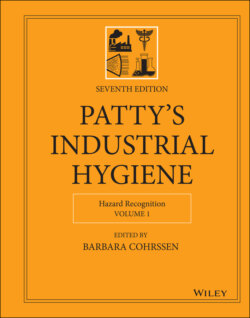Читать книгу Patty's Industrial Hygiene, Hazard Recognition - Группа авторов - Страница 125
6.2 Turning Risk Knowledge into Action
ОглавлениеThe premise of participatory EHS is that workers know their workplace better than anyone else. With a mutual sharing of information by workers and their EHS staff, an elevated knowledge of workplace risk is created that allows them to develop a more comprehensive approach to their daily tasks. The amount of control that workers are given over their workplace is an important element, as well as a potential limitation, for the effectiveness of the participatory process. By definition, managers have a level of control over their workplace that is not available to the workers. Without an appropriate incentive, management is not usually willing to truly empower workers to determine their own solutions. In addition, a situation in which workers do not have a climate of trust between themselves and upper management can, in and of itself, add to their workplace risk factors (11, 53).
This problem exists as much in developed nations as in economically developing countries. Unfortunately, lack of worker empowerment is not consistent with the fact that workers are usually the ones who know their job and their peers well enough to identify and create solutions that will persist (54). However, management can be in a position to give a certain level of control to the workers when their production costs increase due to workplace incidents, accidents, and regulatory fines. These increased costs can often be related to decreased working efficiency, employee turnover rates, absenteeism, medical care, and worker's compensation . Participatory EHS and the RLBMS strategy present a synergistic opportunity for the process to be implemented in a manner that significantly increases workplace risk knowledge and offers an opportunity to improve working efficiency and employee satisfaction that can reduce issues relating to production costs. Therefore, both management and workers have a vested interest to translate this risk knowledge into action that is geared toward achieving these objectives. In addition, should management need to bring a request for additional to accomplish these objectives to the corporate board of directors, it is good to know that they also use comparable risk matrices to derive levels of risk as part of a standard board room language.
